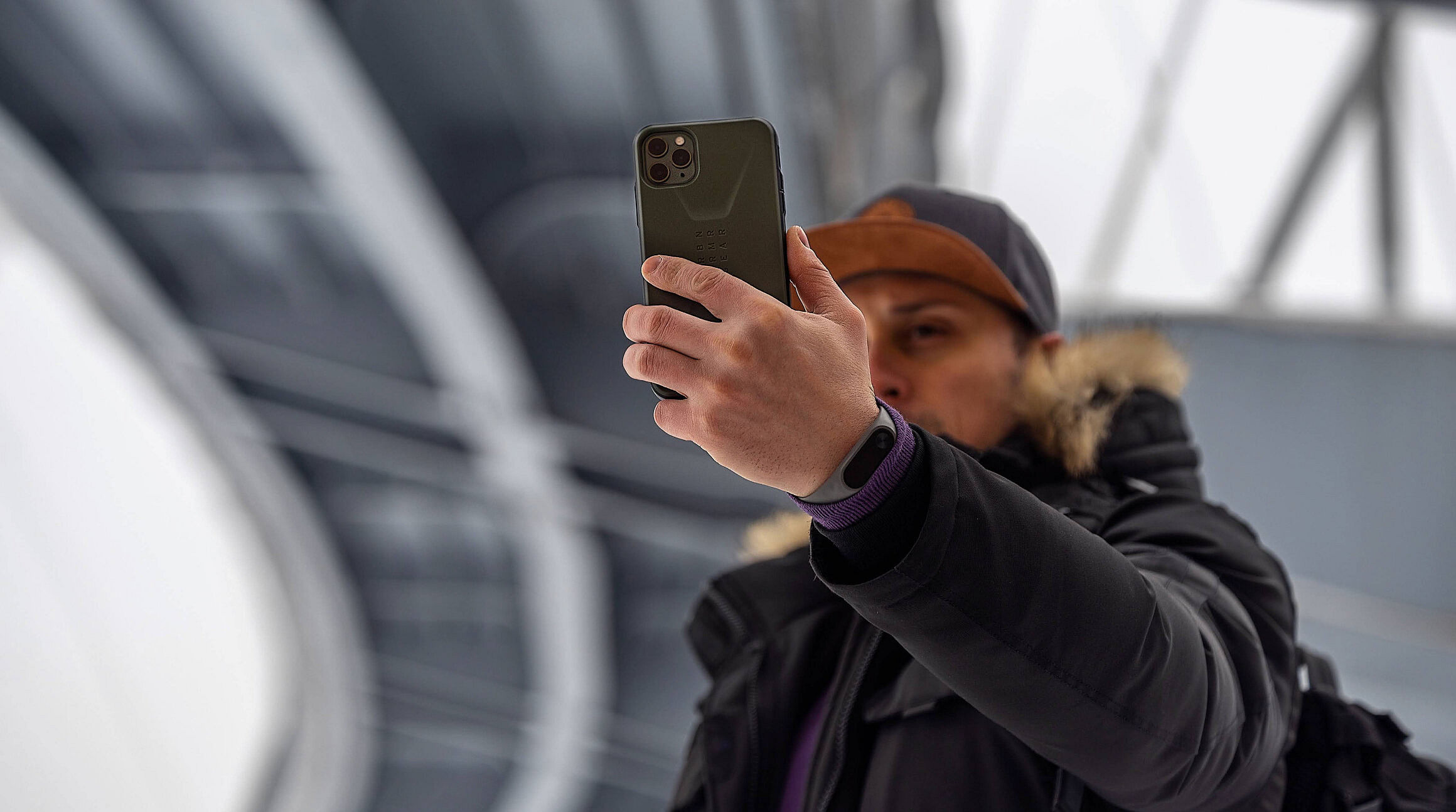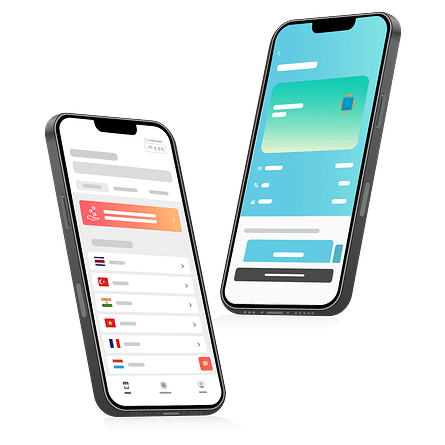
Europe is one of the most popular destinations on the planet, with close to 600 million visitors annually. If you're planning on traveling to Europe, you may wonder whether you can use your iPhone once you're there. The short answer is: Yes, you can! In this guide, we'll walk you through how to prep your iPhone for European travel and stay connected while you're abroad. Let's jump in.
In this article:
- Network compatibility in Europe
- Traveling with an unlocked iPhone
- Using Wi-Fi in Europe
- Using cellular data in Europe
- Using a daily roaming plan in Europe
- Using a local SIM card in Europe
- Using an eSIM in Europe
- FAQ about traveling to Europe with an iPhone
 Unsplash
Unsplash
Network Compatibility in Europe
Before traveling to Europe, it's important to check whether your iPhone is compatible with the local networks there. iPhones are designed to support various network technologies, including GSM, which is the network standard in Europe. However, to ensure that your iPhone will work properly, it is recommended that you check your specific model and the supported frequency bands before your trip.
Traveling With an Unlocked iPhone
If you plan to use a local SIM card or eSIM to stay connected, you'll also want to ensure that your iPhone is unlocked. A carrier-locked iPhone is only compatible with one carrier or network provider, limiting your connectivity options while abroad.
Here's how to check if your iPhone is unlocked:
- Go to "Settings"
- Tap "General" > "About"
- Scroll down to "Carrier Lock" or "Network Provider Lock"
- If your iPhone is locked, you'll see the name of your carrier
- If your iPhone is unlocked, you'll see "No SIM restrictions"
Using Wi-Fi in Europe
One way to stay connected while you're in Europe is to use Wi-Fi networks wherever possible. Most European cities and popular tourist destinations have widespread Wi-Fi coverage in hotels, cafés, and public spaces.
However, it's important to note that Wi-Fi networks come with certain risks, and it's highly recommended to use a VPN to ensure a secure connection. Additionally, constantly searching for and connecting to different Wi-Fi hotspots can be a hassle and take away from valuable vacation time.
Using Cellular Data in Europe
Another option is to use cellular data while you travel. Cellular (or mobile) data enables you to stay connected even when you're on the go. Plus, cellular networks have a wider coverage area than Wi-Fi, which means you'll experience less downtime without an internet connection.
The catch: Roaming fees. When you travel outside your mobile provider's coverage area (for example, to Europe), your phone "roams" to pick up a new signal and keep you connected. While this enables you to continue to access data, call, and text, it also comes with additional charges from your carrier.
Related: A Traveler's Guide to Data Roaming: How It Works and Why It Matters
 Freepik
Freepik
Using a Daily Roaming Plan in Europe
One way to keep roaming fees under wraps is by purchasing a roaming plan from your mobile provider. A roaming plan allows you to continue using your domestic phone plan abroad for a daily fee, which includes an allowance for data, calls, and texts.
Roaming plans can be quite expensive, and they may come with hidden costs. Most American mobile providers charge a daily rate of around US$12 and US$15. This daily rate isn't based on the amount of data, calls, or texts that you use, but rather on a flat fee per day. That means you'll have to pay the same amount whether you use 1GB, 3GB, or 5GB of data.
Related: eSIM vs Roaming Plan For Travel: Which Is Better?
Using a Local SIM Card in Europe
Another option is to purchase a local SIM card. A local SIM is a physical SIM card you buy at your destination. It's sold as a prepaid bundle that gives you a fixed amount of data, calls, and texts for your trip. To get connected, you need to pop out your regular SIM card and insert the local SIM. If you choose this option, be careful to keep your regular SIM card in a safe place so you don't lose it during your travels.
You can buy a local SIM card at the airport, newsstands, convenience stores, telecom and mobile shops, electronics stores, and even vending machines. The price of a local SIM will vary depending on the country you're visiting and the local telecom company you choose. However, it's usually more cost-effective than a daily roaming plan.
 Freepik
Freepik
Using an eSIM in Europe
You can also purchase an eSIM plan to keep your iPhone connected in Europe. Just like a local SIM, it's a prepaid plan that allows you to access data when you travel. You can get an eSIM package from a provider like Airalo — we have plans for Europe starting at just US$5 — and instantly connect to a mobile network when you arrive at your destination.
The best part? You don't need to find a local SIM card vendor, remove your physical SIM card, or stress about expensive roaming fees while you travel. The only caveat is that you need an eSIM-compatible device (most iPhones manufactured since 2018 fit the bill) to install one on your iPhone.
Related: The Complete eSIM Guide For iPhones
FAQ About Traveling to Europe With an iPhone
Can I bring my iPhone to Europe?
Yes, you can! iPhones are compatible with GSM networks, which is the standard in Europe. Make sure you have an unlocked phone to avoid restrictions from your carrier.
Which iPhone is best for international travel?
Any eSIM-compatible iPhone is a great choice for international travel. It's also a good idea to have a model with good battery performance and a top-notch camera. Upgraded models offer the most benefits, so the most recent iPhone will usually be your best bet.
Does it cost extra to use my iPhone in Europe?
Using your iPhone in Europe will cost extra if you rely on data roaming. You can avoid surprise roaming charges by getting a daily roaming plan from your provider, purchasing a local SIM card when you arrive at your destination, or getting an eSIM to stay connected when you travel.
How do I use my iPhone in Europe without charges?
To avoid roaming charges in Europe, consider using an eSIM or getting a local SIM card at your destination. Both options give you access to prepaid data when you travel. An eSIM is the better option, with more affordable rates and 100% digital functionality.
How can I save money while traveling to Europe with an iPhone?
You can save money by purchasing a Europe eSIM before you travel. An eSIM gives you access to affordable data so you can stay connected while you're abroad. Some plans even offer call and text services. Other ways to save money include booking your flight and accommodation in advance, traveling during off-peak seasons, using public transportation at your destination, and taking self-guided tours while you're there.
You're all set to use your iPhone in Europe! Don't forget to purchase an eSIM for seamless connectivity while you're there. Visit the Airalo store to find eSIMs for Europe and 200+ countries and regions worldwide.



